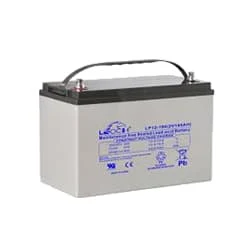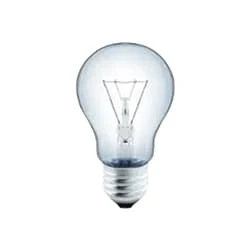Single phase Switchboard with IPS wiring | single phase main switch Wiring
Single phase Switchboard with IPS wiring:
This Diagram Shows Single-Phase Power is a Two-Wire Alternating Current (ac) Power Circuit. Single-Phase wire has Three Wires located Within the Insulation. Two hot wires and one Neutral wire provide the power. Each Hot wire Provides 120 volts of Electricity. The Neutral is Tapped off from the Transformer. Single-Phase Wire has Three wires Located Within the Insulation.
Diagram of Single phase Switchboard with IPS wiring:
 |
| Fig 1: Single phase Switchboard with IPS wiring |
Components Need for this Project:
You can get the components from any of the sites below:
- DP MCB [See Buy Click Amazon]
- IPS [See Buy Click Amazon]
- 12V Battery [See Buy Click Amazon]
- Switch [See Buy Click Amazon]
- Socket [See Buy Click Amazon]
- Light [See Buy Click Amazon]
- Tube Light [See Buy Click Amazon]
- Ceiling Fan [See Buy Click Amazon]
*Please note: These are affiliate links. I may make a commission if you buy the components through these links. I would appreciate your support in this way!
$ads={1}Read Also:
Components used to make the Single phase Switchboard with IPS wiring :
01. DP MCB
 |
| Fig 2: DP MCB |
Double pole MCB can control two wires. This circuit breaker is generally used in single-phase electric lines. Double pole MCB circuit breaker input has two wires supply two wires and an output. In a single-phase line, A double-pole MCB circuit breaker is used to give good production. This circuit breaker is provided through phase and neutral circuit breaker, it is very safe. This circuit breaker is preferred for home appliances. A DP MCB usually trips for 2 reasons 1. Overload 2. Short circuit.
02. IPS
 |
| Fig 3: IPS |
An IPS is an electrical device that converts DC current into alternating current (AC). AC can be operated at any voltage and frequency system with suitable transformers, switches, and control circuits. Most electrical appliances run on AC (Alternative Current). Nowadays inverter is a very common device that is used to change the voltage in any type of machine or to control the speed of the induction motor. For example, the power supply in our country is 50 Hz, and the speed of the motor will also be fixed at this fixed Hz. In such cases inverter is used to drive the motor slowly or strongly.
03. 12V Battery
 |
| Fig 4: 12V Battery |
A 12-volt Battery is an Irregular Battery used in Specific Electronic Applications. Of all the types of Batteries, the 12-Volt Battery is one That Looks Very Different Depending on its use. It can be Large or small, Heavy or Light. Twelve-volt batteries are commonly used in RV, Boat, and Other Automobiles Systems. From a Technical Perspective, a Battery Uses one or more cells to Allow a Chemical Reaction Creating the flow of Electrons in a Circuit.
04. Switch
 |
| Fig 5: Switch |
A Single-Pole, Single-Throw (SPST) Switch. It's Got one Output and One Input. The Switch will Either be Closed or Completely Disconnected. SPSTs are Perfect for on-off Switching. They're also a Very Common Form of Momentary Switches. SPST Switches are Commonly Used in a Variety of Electrical Circuits and Applications, Such as Turning on And off Lights, Fans, and Other Appliances. They can Also be Used to Control the Flow of Electricity to Different Parts of a Circuit or to Switch Between Different Circuits Altogether.
05. Socket
 |
| Fig 6: Socket |
A socket is a type of equipment used in electrical wiring lines that always has an electrical connection. According to the need, it can be supplied to the electrical equipment. In case of electric iron, electric hand drill machine and electric hand grinder etc. two-pin socket with earth terminal is used. Also, three-pin sockets are used for electrical appliances that have a metal body and are likely to be electrified. Eg – Refrigerator, room heater, table heater, hot-plate, electric oven etc.
06. Light
 |
| Fig 7: Light |
CFLs work in a completely different way from ordinary lamps, they work by using a different process called fluorescence rather than generating light from heat. A typical light bulb wastes 90% of energy and converts only 10% of energy into light, this is where CFL has the biggest advantage. CFL- Curved or conical glass tube filled with argon and a small amount of mercury vapor. The inner wall of the glass is coated with fluorescent material. CFL- It is manufactured using the principle of creating fluorescent light. CFL- Originally white in color but now the construction and use of CFLs producing colored light has become popular.
07. Tube Light
 |
| Fig 7: Tube Light |
A fluorescent lamp, tube light, or rod light is a type of electric lamp that uses electricity to excite mercury vapor to produce light. These lamps are mainly used as an artificial source of light. When the mercury vapor inside a fluorescent lamp is excited with electricity, the mercury molecules emit short-wavelength ultraviolet light that hits fluorescent particles to produce visible light. Fluorescent lamps always require a ballast to control the flow of electrical energy inside the lamp, which is required by incandescent lamps. is not
08. Ceiling Fan
 |
| Fig 8: Ceiling Fan |
The main driving force behind all ceiling fan systems is the motor used inside the fan. We can also compare it with the soul of a fan. This motor converts the supplied electrical energy into mechanical energy which turns the ceiling fan and gives us air. When current is supplied, the magnetic field formed on the positive half-cycle becomes the reverse magnetic field on the next negative half-cycle. The magnitude part does not rotate and the capacitor is converted to a phase when it is connected to a phase motor or ceiling fan with a helical coil or stationing coil. When power is supplied there is a magnetic difference between the phase currents and the coils (acting as two phases) so that the motor or fan rotates.
Thank You for visiting the website. Keep visiting for more Updates
$ads={2}
Frequently Asked Questions
How does single-phase power work?
In electrical engineering, a single-phase electric power supply (abbreviated 1f) is the distribution of alternating current flow electric power using a system in which all the voltages of the supply vary in unison. Single-phase distribution is used when loads are mostly lighting or heating, with few large electric motors.
Why does single-phase have 3 wires?
In most of the world, 2- wires suffice for 220 v single phase (not counting any additional earth protective grounds). In the US, the 240 v are center-tapped at the transformer, so you end up with three- wires- the neutral (center tap) and 2 hot wires of 120 volts each to neutral, or 240 volts hot to hot.
What is the voltage in a single phase? How many wires for a 240V single phase?
Single-Phase three-Wire – 120/240V or 120/208V Metering Print. Single-phase three-wire systems (some call them two-phase or Edison) have 2 hot wires and a neutral wire. This is the most common of the residential system in the USA.
How many wires for a 240V single phase?
In a single-phase power supply of the system, the voltage may reach up to 230 Volts. But on a three-phase connection, it could carry a voltage of up to 415 Volts. For smooth flow of electricity on a single-phase connection, it requires 2- separate wires.
Why single phase voltage is 230V?
In a single-phase system, 230V is commonly used for residential or light commercial applications because it provides a good balance between efficiency and safety for typical household appliances or electronics.










Post a Comment
Do leave your comments